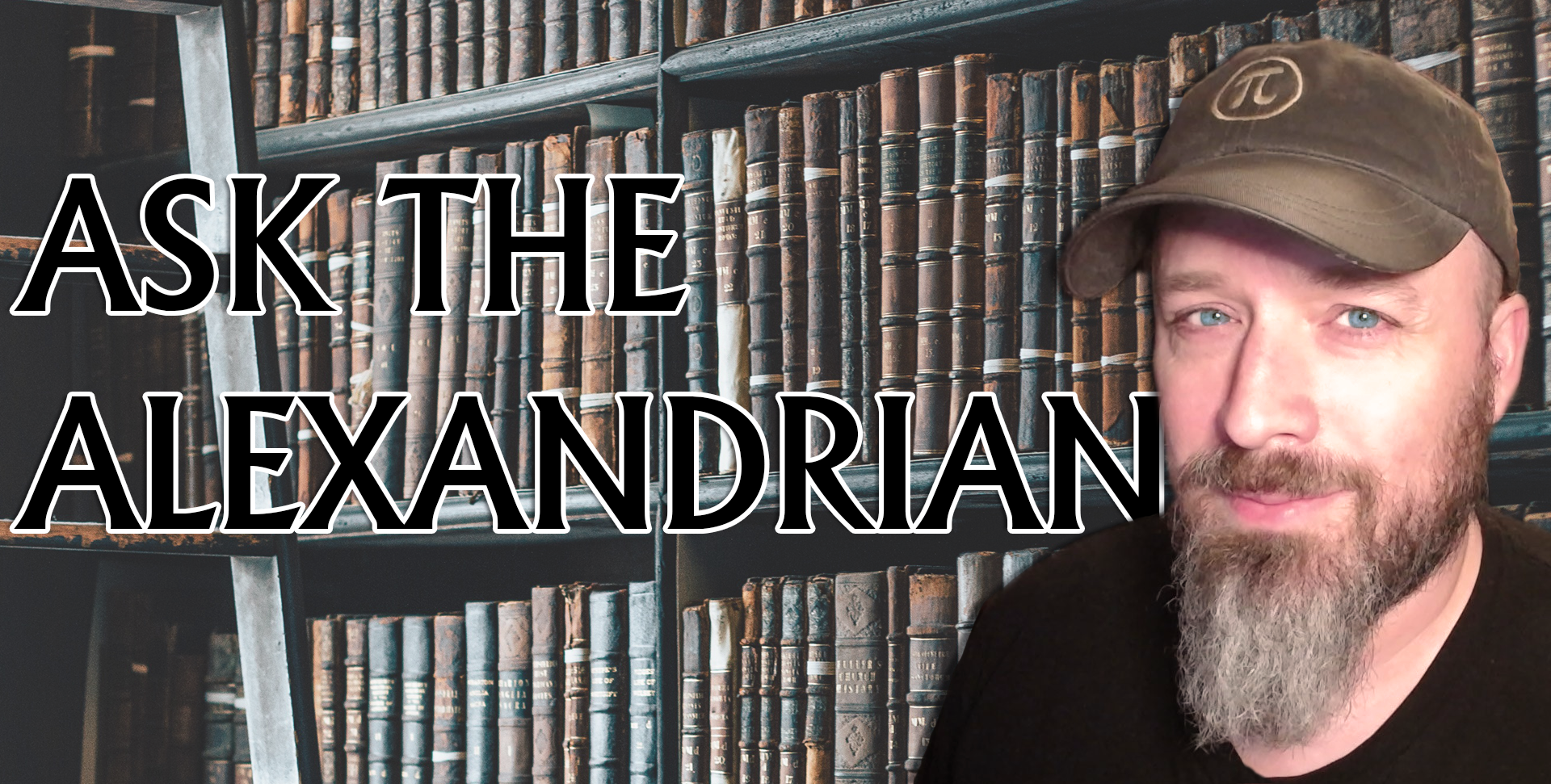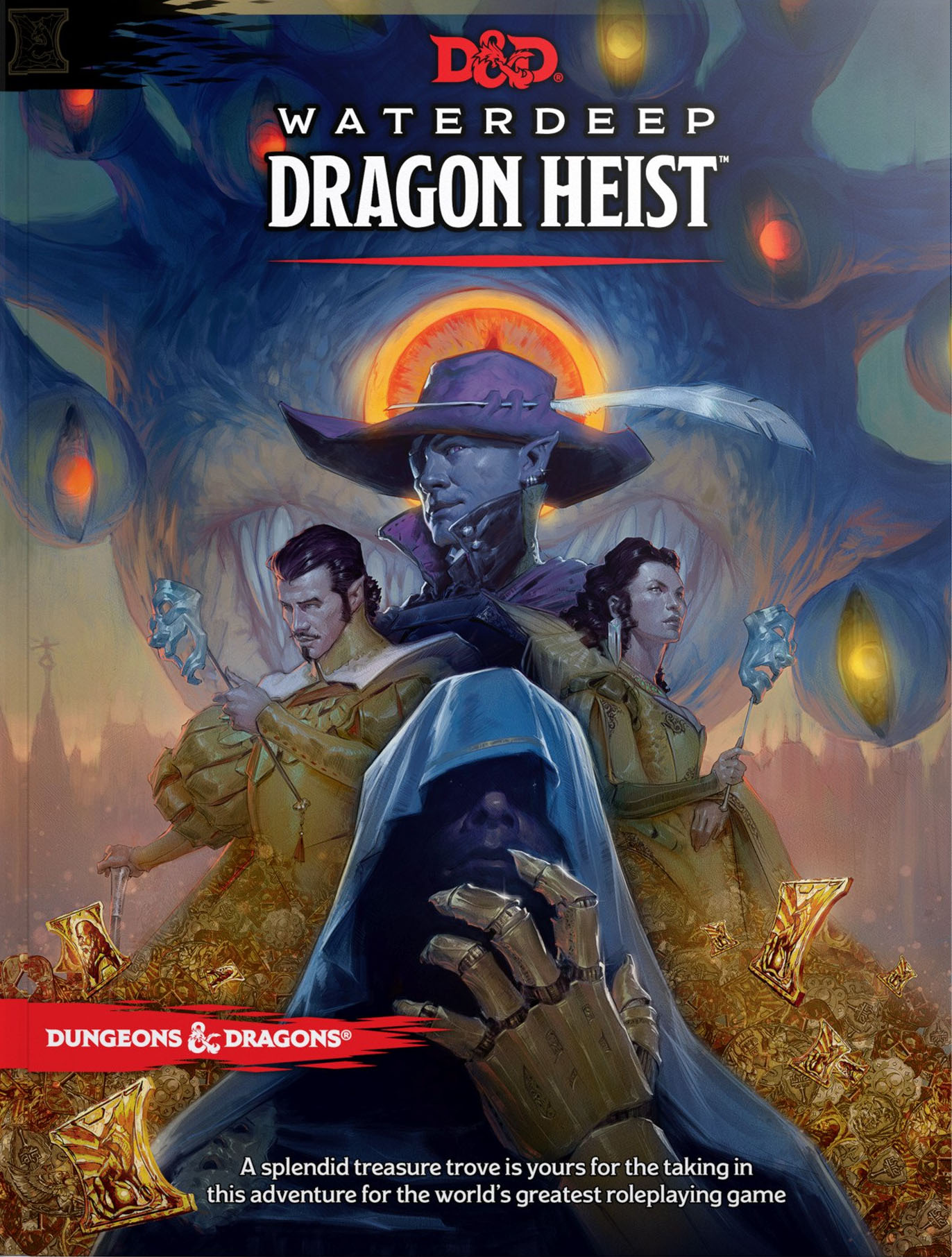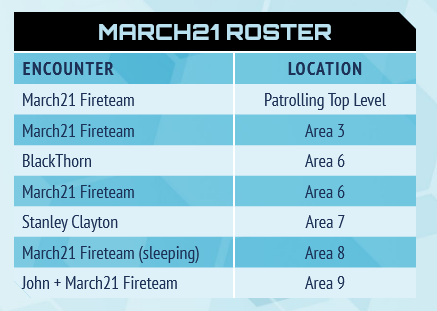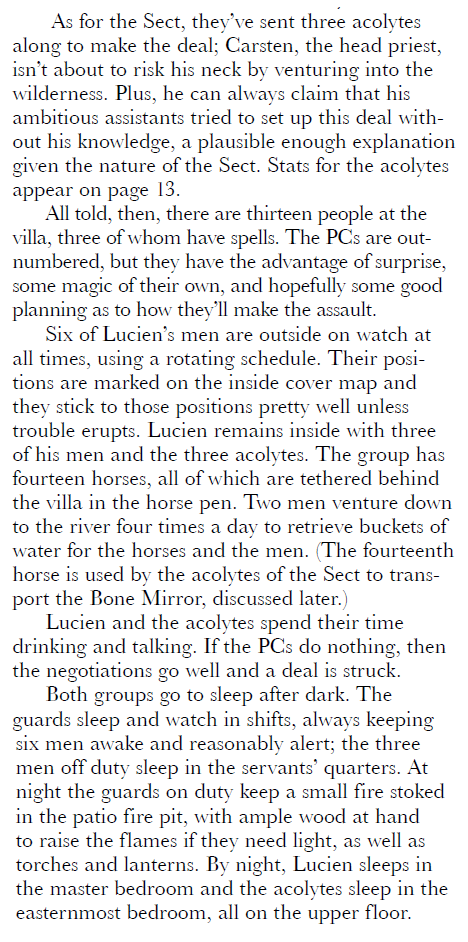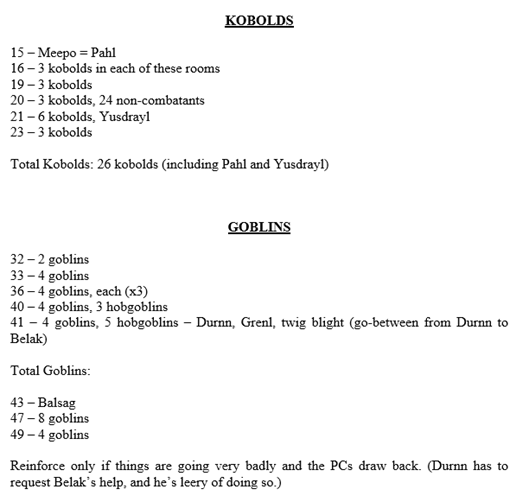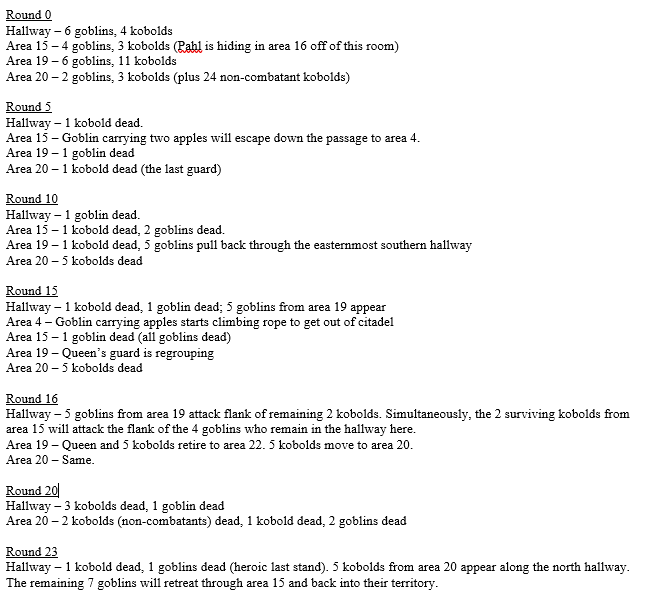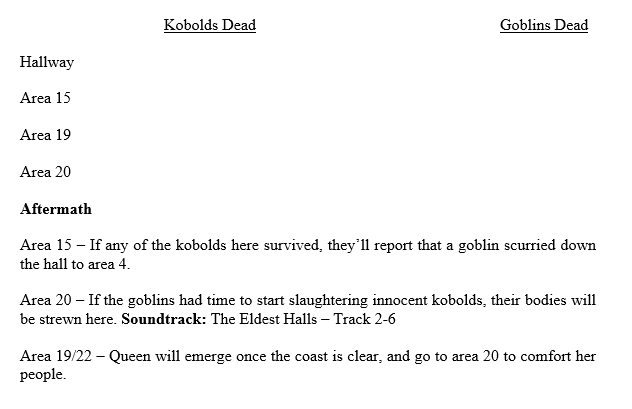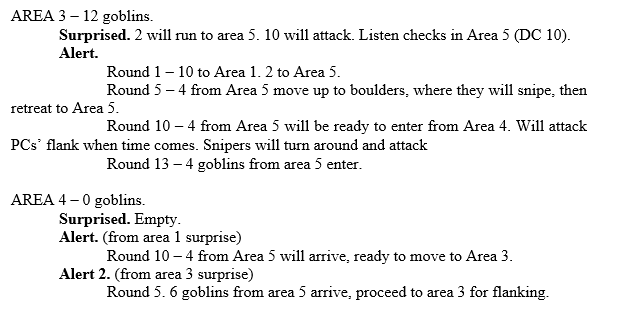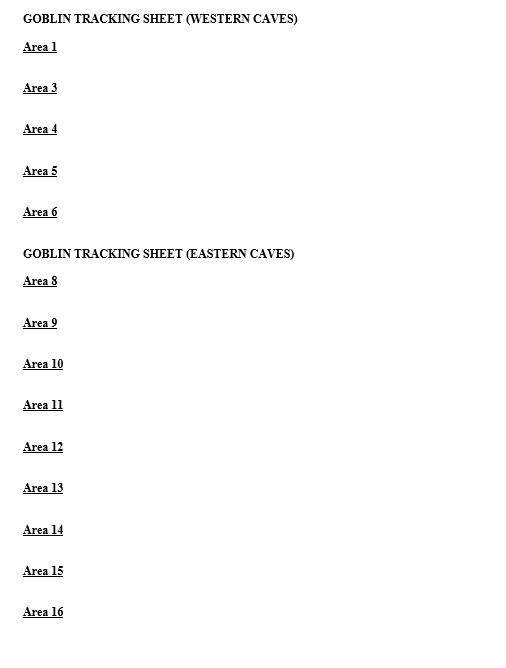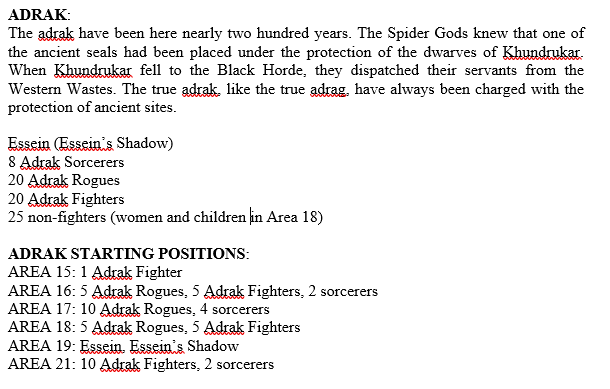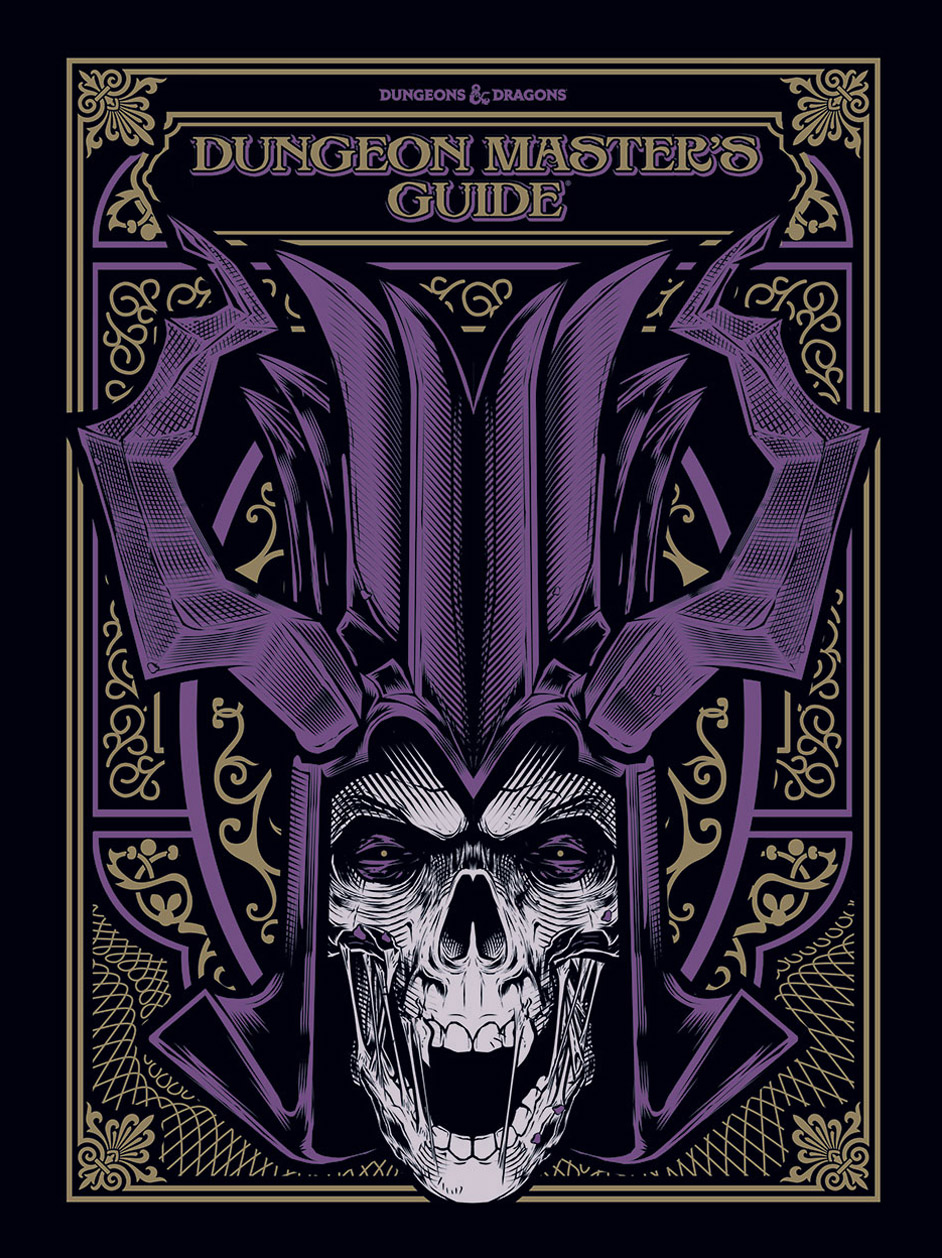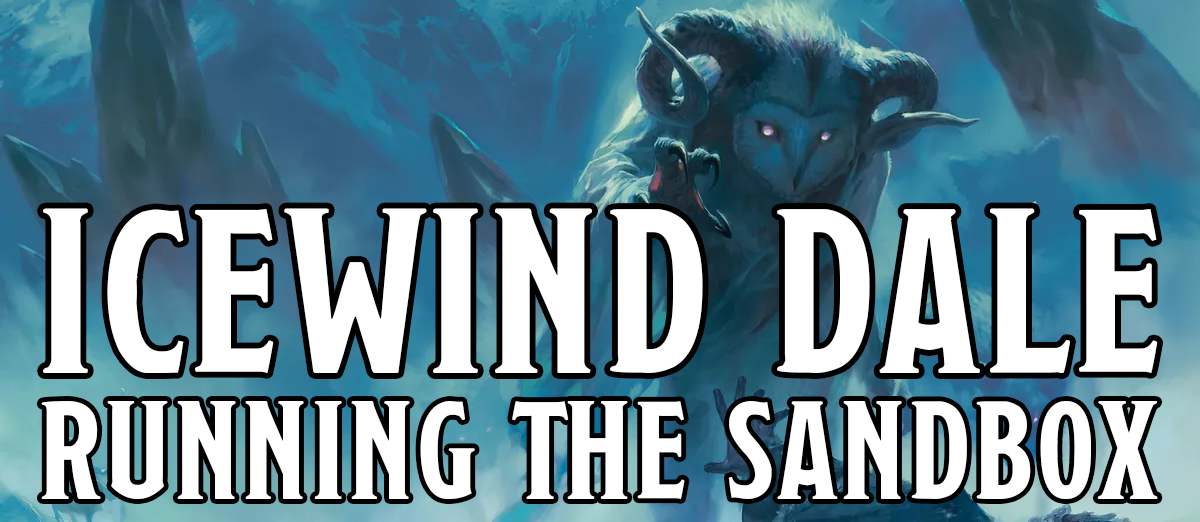
The opening chapters of Icewind Dale: Rime of the Frostmaiden are designed as a sandbox.
And I mean a true sandbox. The term is often abused to just mean any non-linear scenario, but Icewind Dale is the real deal: A campaign in which the players are empowered to either choose or define what their next scenario is going to be.
As such, it’s going to be the first sandbox experience for a lot of new Dungeon Masters and players. And that’s great. Unlike the “hexcrawl” in Tomb of Annihilation — which was so dysfunctional in trying to force a linear plot into a non-linear structure that new DMs running it seem to frequently know less about how a hexcrawl works than they did before they started — I think Icewind Dale will introduce sandbox play to a lot of new players in a really positive way.
Now, I do have some quibbles:
- It’s a little half-assed, collapsing into a linear plot at higher levels.
- The advice given on how to run the campaign is inconsistent and, in some places, simply bad.
- There are a number of places where I think very small adjustments can create very large improvements in the experience at the table.
But the Icewind Dale sandbox fundamentally works for as long as it lasts.
As such, it also offers a great opportunity to see what a sandbox campaign looks like in actual play. And, because the book could be a lot clearer about some of this stuff, I’ve seen a fair number of DMs on social media expressing confusion. So let’s take a closer look.
SPOILERS FOR RIME OF THE FROSTMAIDEN!
SANDBOX STRUCTURE
Here’s how Icewind Dale: Rime of the Frostmaiden works:
- There are ten towns in Ten-Towns. Each one has a quest associated with it, and these are almost universally proactively triggered — i.e., if the PCs go to the town, they’re supposed to get the quest associated with that town.
- There is a Stage 1 rumor table (p. 18). Each rumor on this table points at one of the town-associated quests.
- There is also a Stage 2 rumor table (referred to as “tall tales” here, p. 102) which is unlocked at either 3rd or 4th level (depending on which page you’re looking at). These rumors point to higher level quests located in the wilderness around Ten-Towns.
- Finally, there are two Starting Quests. These are to be given to the PCs at the beginning of the campaign, and each is designed to motivate the PCs to travel to other towns.
For example, the “Cold-Hearted Killer” starting quest instructs the DM to:
- Randomly generate a town. That’s the starting town for the campaign and will also be where the PCs get the “Cold-Hearted Killer” scenario hook (to track down a serial killer targeting victims throughout Ten-Towns).
- Randomly generate a different town. This is the town where the serial killer will be found.
Although not explicitly stated in the book (which seems to have caused some confusion), the intention here is fairly clear: In following the starting quest, the PCs will go to another town and investigate to see if, for example, the serial killer is there. In that town they’ll scoop up the quest associated with that town and, in many cases, additional rumors pointing to quests in other towns.
This essentially becomes the default action of the campaign: If in doubt, go to a town and look for your starting quest objective.
The final element here is how the campaign handles milestone advancement:
- The characters advance to 2nd level after completing their first quest.
- They advance to 3rd level after completing three Stage 1 quests.
- They advance to 4th level after completing five Stage 1 quests.
(Advancement gets fuzzier after the PCs reach the Stage 2 quests.)
QUIBBLES & ADVICE
Now, I do have a couple of quibbles here, and I’ll take a moment to call them out:
First, the book instructs the DM to only use one of the starting quests. I disagree. You should use both starting quests. Partly this is logistically superior: Each starting quest ends essentially at a random town. (The other starting quest, for example, has the PCs hunting chwingas — a type of fairy — and there’s a 25% chance that any town they visit has chwingas in it.) Having both quests in play  makes it less likely for the PCs to exhaust their starting quests after just one town.
makes it less likely for the PCs to exhaust their starting quests after just one town.
But it’s also just a superior experience: Having both quests in hand will deepen the default interactions with each community. It also breaks the players of the expectation that they’ll be doing a linear set of assigned tasks.
My recommendation is to give one starting quest in the first town visited and the other starting quest in the second town visited. (This creates a motivation for the PCs to potentially backtrack to the first town — either immediately or at some later time — to investigate the second starting quest there.)
My second quibble is how the book handles the rumor tables. Its advice is at best inconsistent (in some places suggesting that rumors should be doled at one at a time; in other places saying that specific taverns can deliver two rumors at a time).
Here’s what it boils down to: The point of a rumor table in a sandbox is generally to give the group LOTS of rumors (i.e., scenario hooks) that they can then choose between and prioritize. (See Juggling Scenario Hooks in a Sandbox.) There’s a much longer discussion to be had here, but briefly I would recommend:
- Delivering 1-2 rumors whenever the PCs investigate a town for their starting quest(s); i.e., tie the rumors into the default action of the campaign.
- Deliver 1-2 rumors any time they’re hanging out in a tavern. (This may already be covered by how they’re investigating their starting quest.)
- Opportunistically drop rumors as part of miscellaneous conversation with NPCs. People gossip about current events, so rumor tables almost always make for good topics of casual chat.
The other key thing here is to make sure that the rumors come from actions the PCs are taking (i.e., chatting in a tavern, canvassing the town for information, etc.). You shouldn’t just arbitrarily say, “Lo! Thou hast heard a thing!”
I’d probably also discard the distinction between Stage 1 and Stage 2 rumors. I don’t think it’s necessary, particularly for players experienced with sandbox play. If your players are conditioned to linear play, though — and might therefore heedlessly plunge into danger they’re not ready to handle — you might want to:
- Keep the proscribed unlock condition.
- Make sure the first 3-5 rumors they get are from the Stage 1 table (which will bias them towards completing those tasks and leveling up first).
- Start by dropping non-actionable versions of the Stage 2 rumors.
For example, one of the Stage 2 rumors points the PCs to the Jarlmoot — a hill where the frost giant leaders once met to settle disputes. What you could do at lower levels is just have an NPC mention the old jarlmoots of the frost giants (without telling the PCs where they can find that hill). Maybe the PCs go hunting specifically for that information, or maybe the foreshadowing just pays off later when they learn the location through another rumor drop. Either way, the depth of the experience makes the game world feel more real and meaningful to the players. (See, also, Random GM Tips: Getting the Players to Care.)

